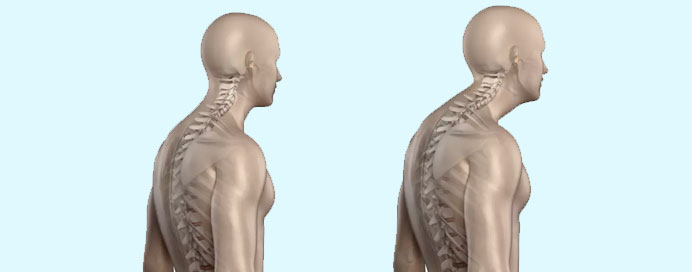Services / Dr. Ravi Bhanushali

Kyphosis is a medical condition characterized by an excessive outward curvature of the spine, leading to a rounded or hunched posture. This curvature typically occurs in the thoracic spine (upper and middle back), causing the spine to curve forward more than normal.
Here’s an overview of kyphosis:
Postural kyphosis: This type of kyphosis is the most common and often develops due to poor posture, particularly in adolescents. It usually does not cause significant health problems and can be improved with exercises and proper posture habits.
Scheuermann’s kyphosis: This type of kyphosis usually develops during adolescence and is characterized by abnormal wedging of the vertebrae in the thoracic spine. The cause is unknown, but it may be related to genetic factors. Scheuermann’s kyphosis can cause back pain and stiffness, especially during growth spurts.
Degenerative kyphosis: This type of kyphosis occurs in older adults and is often associated with degenerative changes in the spine, such as osteoporosis, vertebral compression fractures, or degenerative disc disease. Degenerative kyphosis can lead to a loss of height, back pain, and difficulty with balance and mobility.
Congenital kyphosis: This rare type of kyphosis is present at birth and results from abnormal vertebral development in the womb. Congenital kyphosis may be associated with other congenital abnormalities of the spine or other organs.
Neuromuscular kyphosis: Certain neuromuscular conditions, such as cerebral palsy, muscular dystrophy, or spinal cord injury, can cause weakness or imbalance in the muscles supporting the spine, leading to kyphosis.
